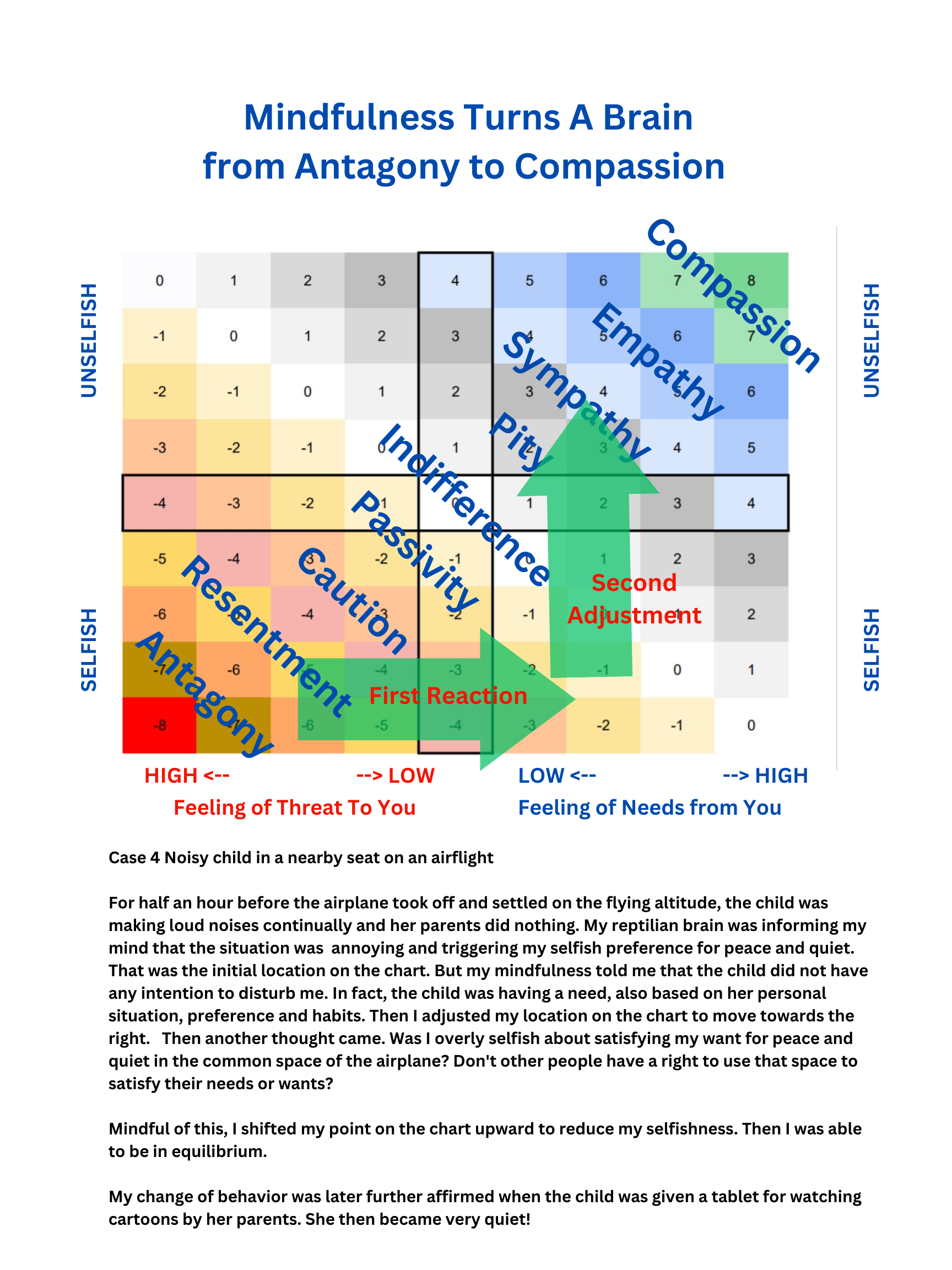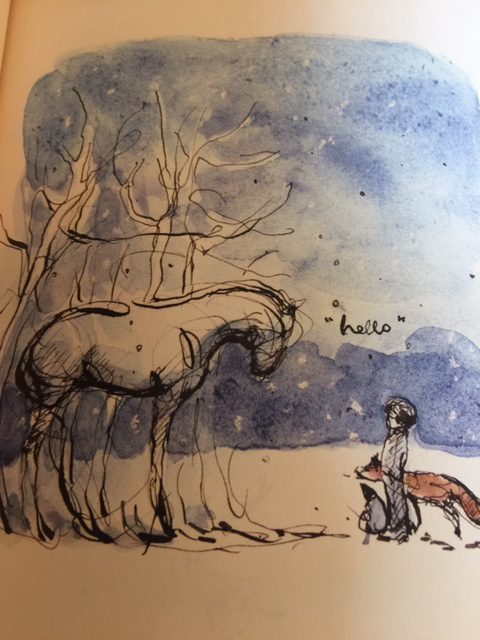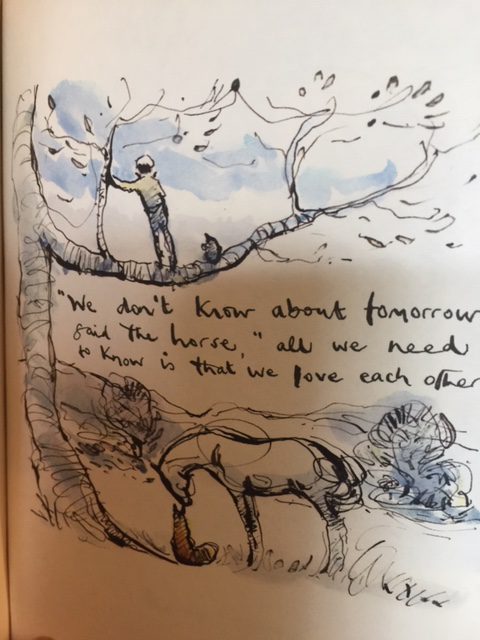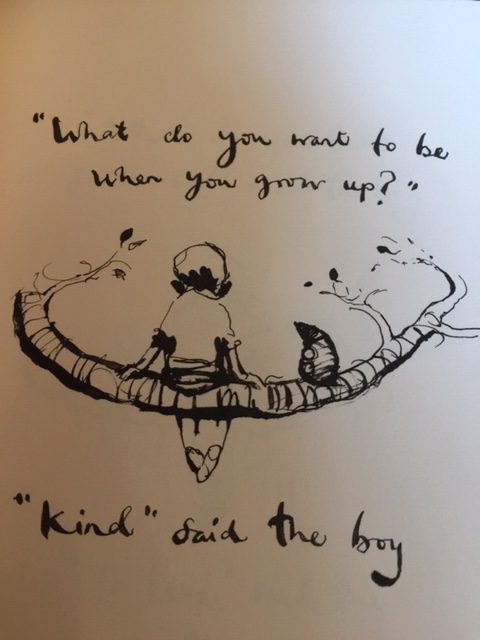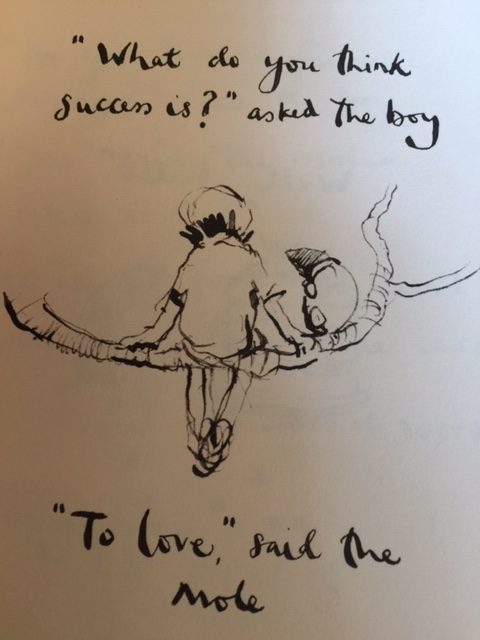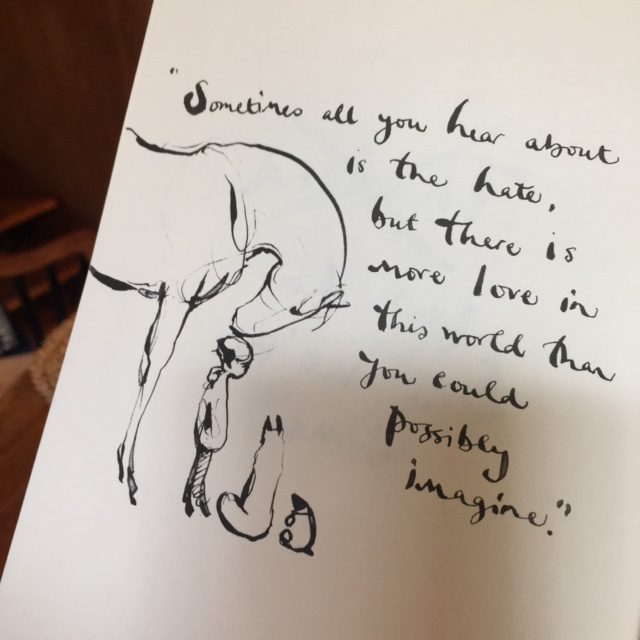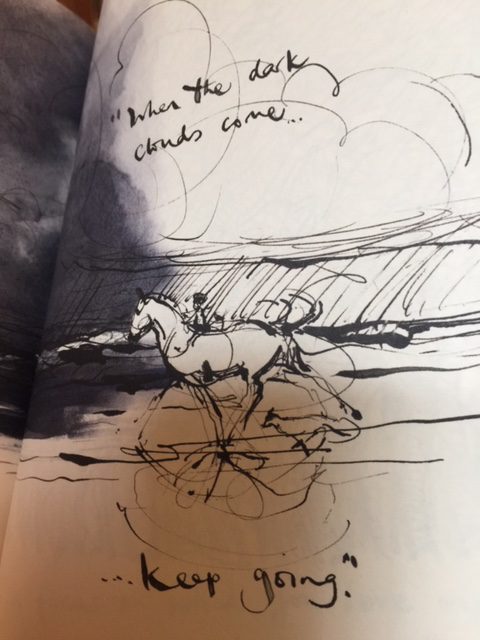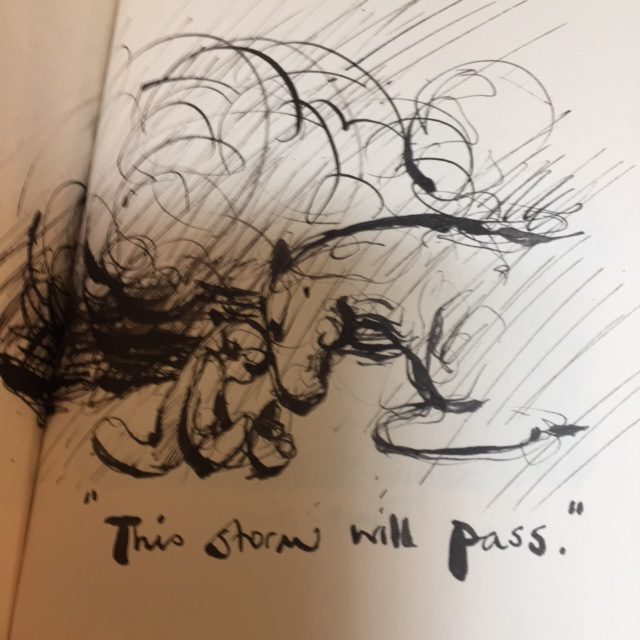STEPHEN LEE CONTINUES TO EXPLORE DIFFERENT CHARTS –
From: “Mindfulness Turns A Brain from Antagony to Compassion” to “Self-assessment For Personal Growth in Good Citizenship”, to adding “Four Levels of Friendship” to the above. May 2023

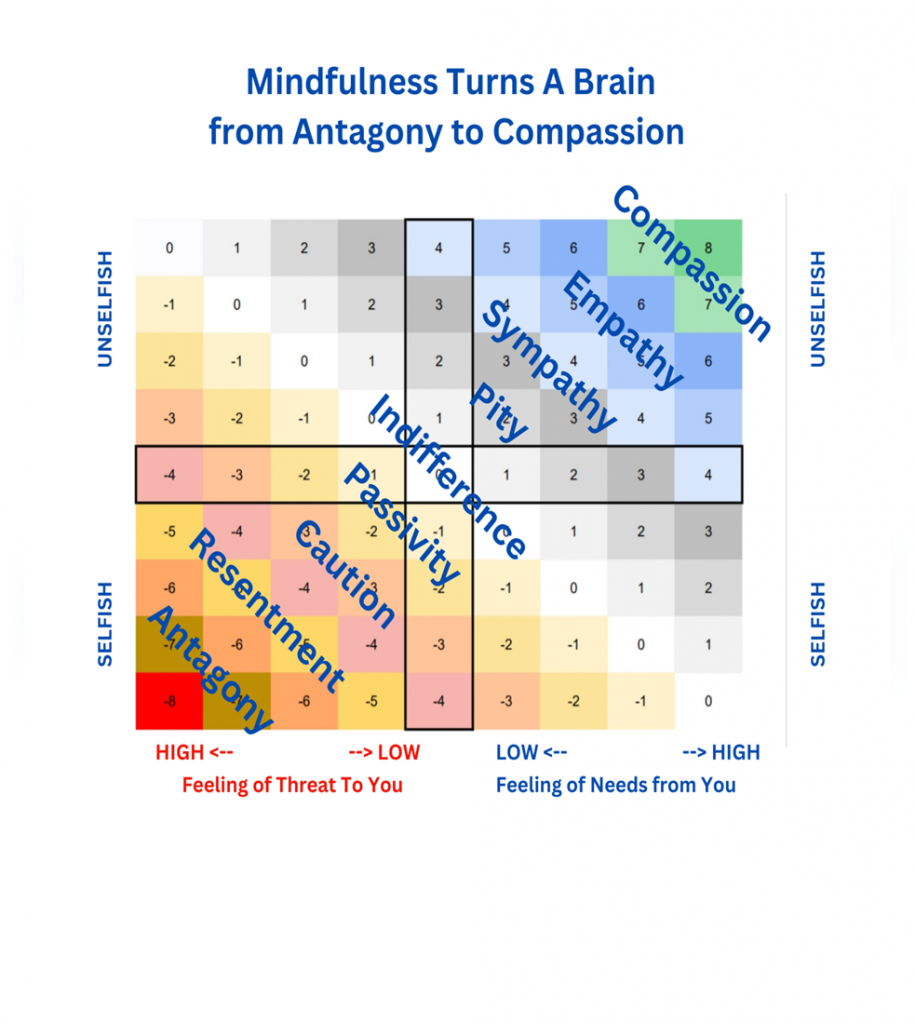
It occurred to me after creating the two-dimensional and four-quadrant chart in my last posting on How to Turn Fear to Compassion, that there is an interpretation for the number inside each small box of the chart.
An obvious interpretation is a score of Fear vs Compassion, ranging from -8 to +8.
Let’s explore the following definition:
Good Citizenship = Unselfishness + Understanding of the Needs of Others
Poor Citizenship = Selfishness + Suspicion of the Intention of Others
Then we can interpret the numbers in each small block of the chart as a Score of Good or Poor Citizenship. In this perspective, the words in the lower left quadrant should be revised to describe poor citizenship. The new chart is as follows.
A score of zero may be described as an Indifferent citizen. A score of 1 – 2 may be described as a citizen with Pity for others. A score of 3 – 4 as one with Sympathy, 5 – 6 as one with Empathy, and 7 – 8 as one with Compassion.
On the score of Poor Citizenship, the adjectives to describe the different levels may be Passive, Cautious, Resentful, and Antagonistic?
Citizenship Score (-8 to +8)
If a social score (from -8 to +8) is self-awarded to a person after a mindful act self-assessed with a Citizenship Score, it would be informative to self-ask how he or she would rate his or her level of Selfishness to Unselfishness, from -4 to +4. This is of course a subjective and qualitative self evaluation, but over time, the self assessment will still provide a valuable indicator of self improvement.
Then the two numbers, the social score and the self rating of Unselfishness, would be two useful statistics. They can be also visualized as statistical distributions or a statistical mean value of the person doing the self assessment or for a group of people if the data are collected for people in different groups, socially or culturally. If both the social score and the self-assessed Unselfish index for a population are plotted as a statistical distribution on top of the chart, as shown in the following chart, for two different years, the improvement would be noticeable.
This approach would also be used for comparing different groups of people over the same year of study, for example, to see if culture makes a difference.

_____________________________________________________________________
A NEW CHART EXTENDING COMPASSION INTO FOUR LEVELS OF FRIENDSHIP.
Acquaintance
Friends
Close Friends, and
Bonded Friends ( This last one is akin to the Chinese male bonding of Yi Qi )






